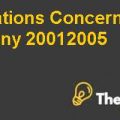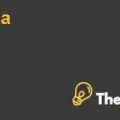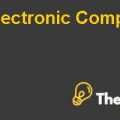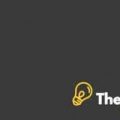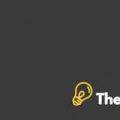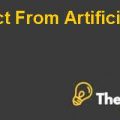
Overview
Zara was founded by the richest man of Spain, Amancio Ortega who opened the first store of the company in 1975 in La Coruna; he was still the largest shareholder of the company as per the 2003 financial reports. He believed that in order to get success in the apparel industry, the manufacturing and retailing departments of a company needed to be closely connected with each other, so that they could timely understand the changing needs and demands of the customers and respond them accordingly. The company had achieved an astonishing success in the starting few years, but it was greatly affected by two major events that occurred in 1985. First the company was acquired by another company, Inditex, which was not only appointed as a holding company of Zara but also acquired a number of other retail channels and a network of internally owned suppliers. The second event was the appointment of Jose Maria Castellano Rios as an IT manager of the company because the founder of the company, Amancio Ortega believed that computers were critically important for the success of a business model that the company wanted to build. However, later on due to his inter-personal competencies, Castellano was appointed as a CEO of the Inditex in 1997.
Problem Statement
Major issue faced by the company was related to the operating system that it was using for its POS Terminal. The company was using the DOS Operating System for their POS terminal, which was no longer supported by its vendor, Microsoft. The company thought that if the hardware suppliers decided to upgrade their machines and they were no more compatible to be used in the DOS Operating System, then Zara would not be able to open new stores until they upgrade their existing OS.
Situation Analysis
Zara was the most successful and profitable brand of Inditex, its headquarters was located at La Coruna in Spain. The brand was present in more than 40 countries worldwide with a huge brand recognition and customer base. The key success factor of the company was its business model, which was famous for its short deadlines, capability of keeping a huge variety of new and innovative designs and decrease inventory backups. The company had made its market distinction on the basis of high understandability of the customer needs and a quick response to these needs. Zara believed on two standards i.e. to assure that the company was capable of providing the desired level of fashion and style to its customers at the moment when people loved to have them. The second standard was that if the company wanted to get success in the market, then it should believe upon the development of a strong brand image with the help of quality products and services rather than depending upon huge advertisement campaigns. The company had developed such an organizational culture within all the stores that the employees were allowed to participate in the decision-making process of the company and exercise their individual expertise within identifiable boundaries. They believed that cloths should be designed and manufactured for a short period of time because their business model was not assuring durability of their apparels but they were committed to offer new and innovative fashion to the customers. For this purpose, the executives of the company were agreed that a competent IT system was necessary for the company in order to entertain its customers according to their needs and demands. Therefore, it had adopted such a POS system that could give them thorough information about the demands of the customers and made the store managers capable of contacting the manufacturing and production units timely when they were out of demand for a specific product. The store managers were given full authority to choose products for their stores and make their orders according to the trends and demands of their respective locality. Beside these measures a team of certain specialized personnel was established at La Coruna, known as “commercial’s” which was responsible to decide what cloths should be designed or produced and what quantity should be supplied to different stores. The store was basically operated in three core sections i.e. Menswear, Women and children wear and with two specific collections i.e. basic and sports. These teams usually comprised upon two designers and two product managers, who were responsible to purchase material from the suppliers and place production orders with the factories and then supply the finished goods to the stores after determining and fixing their prices. They travelled different locations of the world extensively, observing the behavior of customers regarding their cloths and their expectations from the store managers in order to find out what kind of cloths were available at the stores.
In order to keep their business profitable, most of the executives were agreed that the company should have a competent Information Technology enabled POS system. Therefore, they had integrated a DOS based operating system into their supply chain, which had benefited the company in a number of aspects and enabled it to compete with a high speed while keeping a decentralized decision-making process. With the help of this system, it was capable of running a competent ordering, assessment of the customer’s preferences and timely production of new and innovative design functions.
SWOT Analysis of Zara’s IT Function
Strengths: - Zara had developed a competent POS system that was capable of providing them information regarding the ordering and re-ordering level of a store and enabled the top executives to understand the market trends and customer demands without any sort ......................
This is just a sample partial case solution. Please place the order on the website to order your own originally done case solution.
In 2003, the CIO Zara must decide whether to upgrade the IT infrastructure retailer and opportunities. At the time of the case, the company relies on an outdated operating system for its store terminals and has no full-time network in place across stores. Despite these limitations, however, the parent company of Zara, in Inditex, has built an extremely well-performing value chain that is by far the most responsive in the industry. Describes the case of the value chain, focusing on the operations and IT infrastructure. "Hide
by Andrew McAfee, Anders Sjoman, Vincent Dessain Source: HBS Premier Case Collection 23 pages. Publication Date: June 25, 2004. Prod. #: 604081-PDF-ENG


